Gigabyte Aero 17 HDR YC review: Incredible speed, eye-watering price
The brand-new Nvidia GeForce RTX 3080 arrives in this expensive creative heavyweight
-
+
Fantastic performance
-
+
High-quality 4K screen
-
+
Great connectivity
-
-
Very expensive

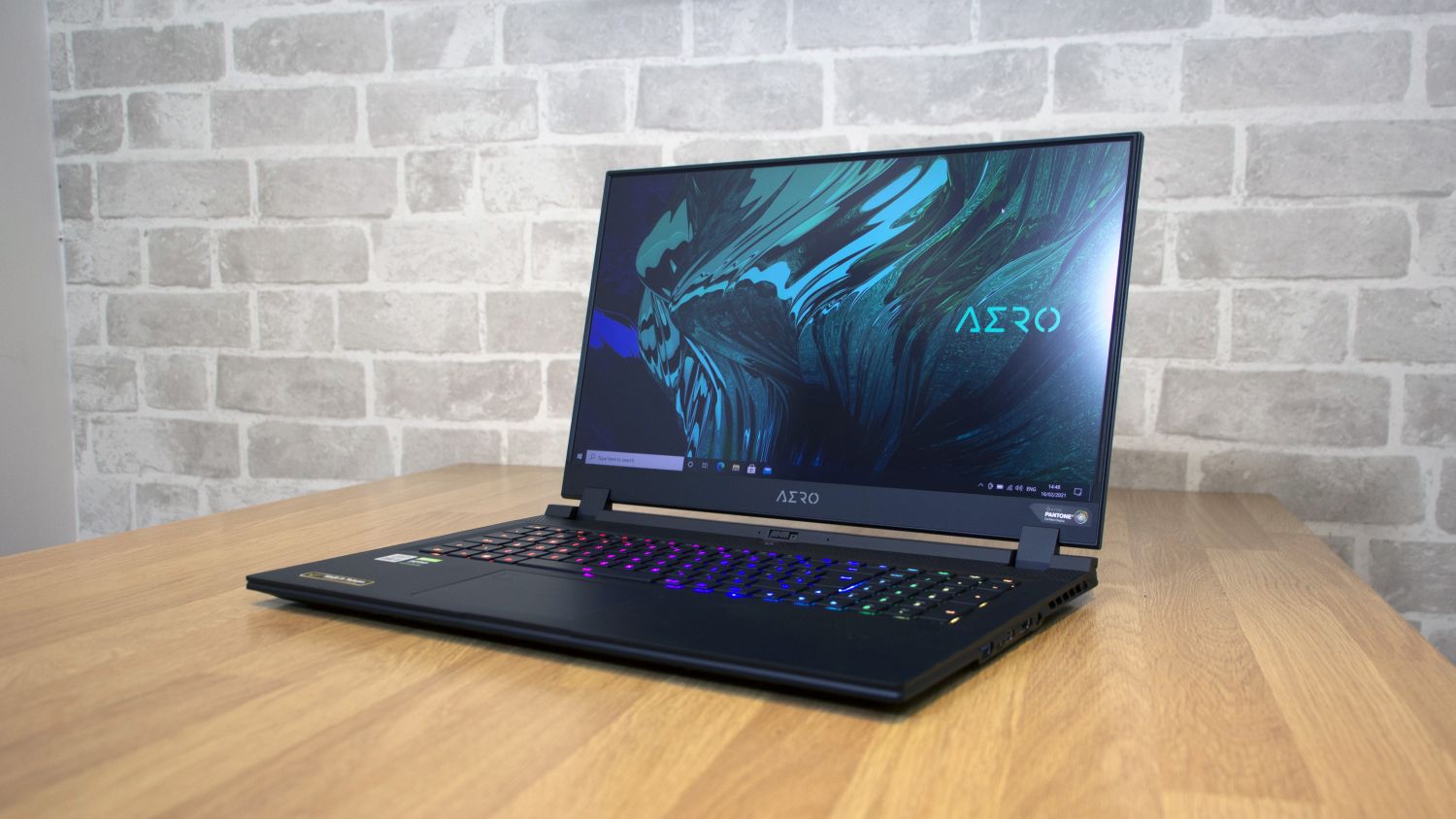
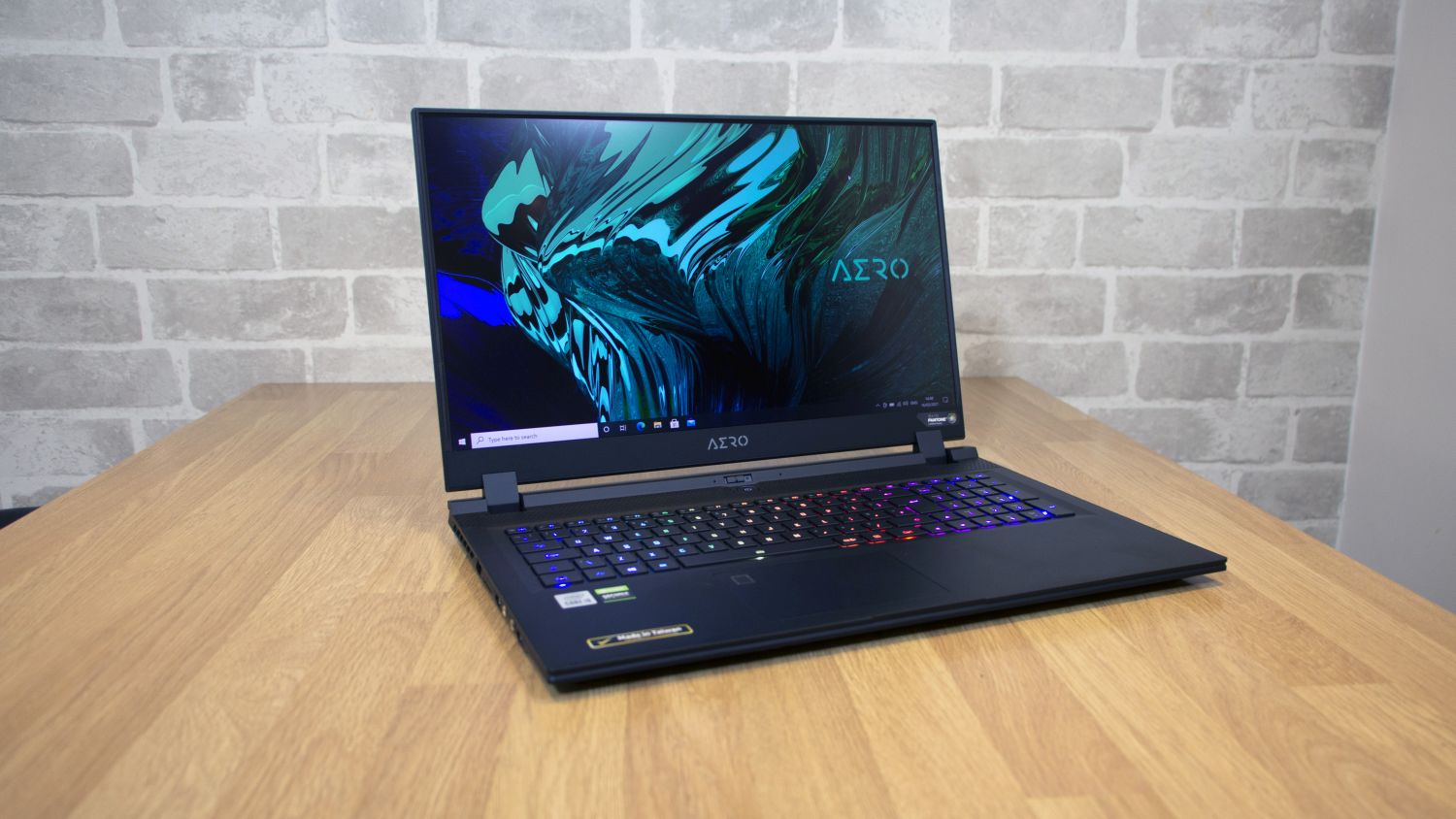
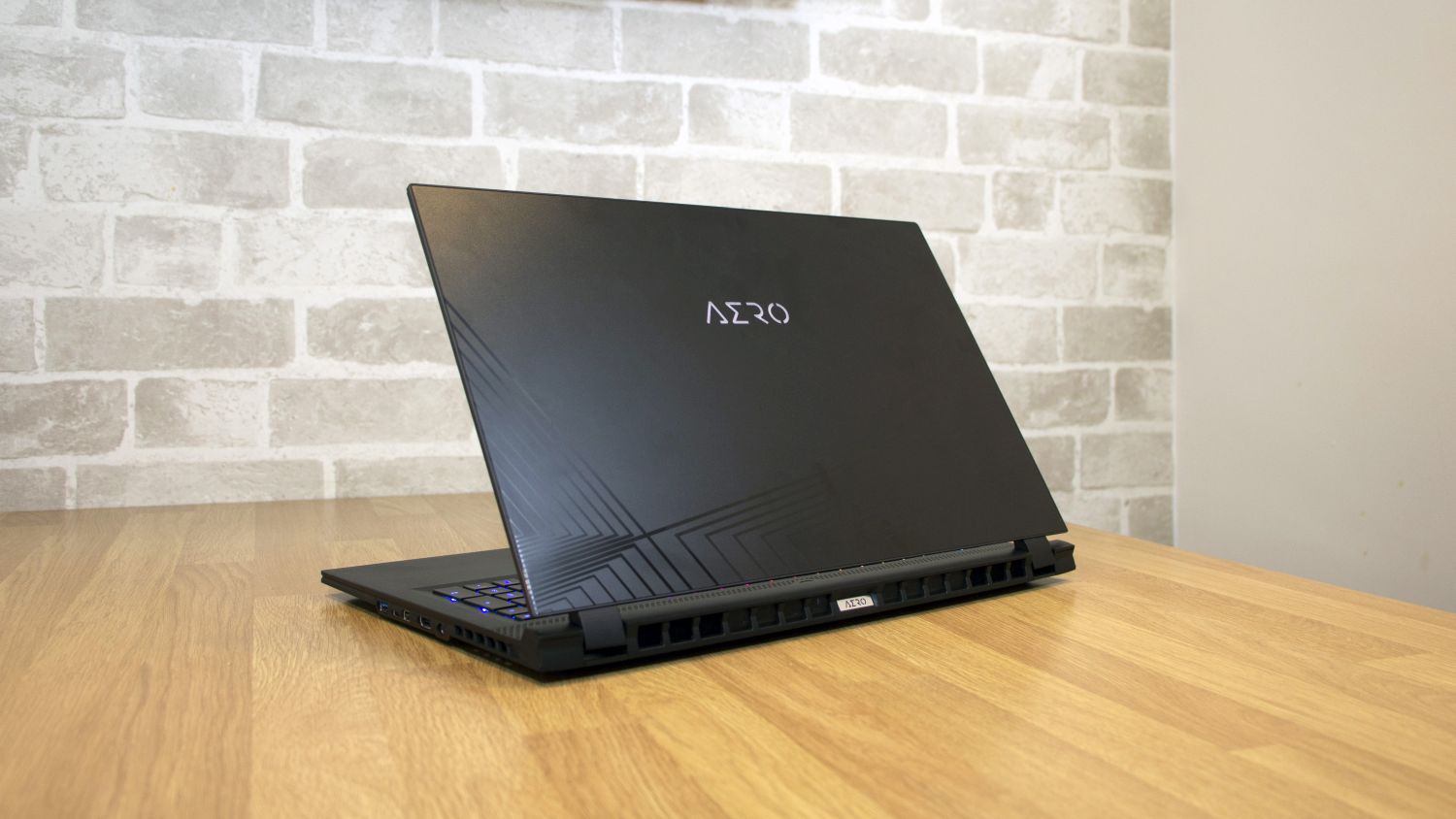
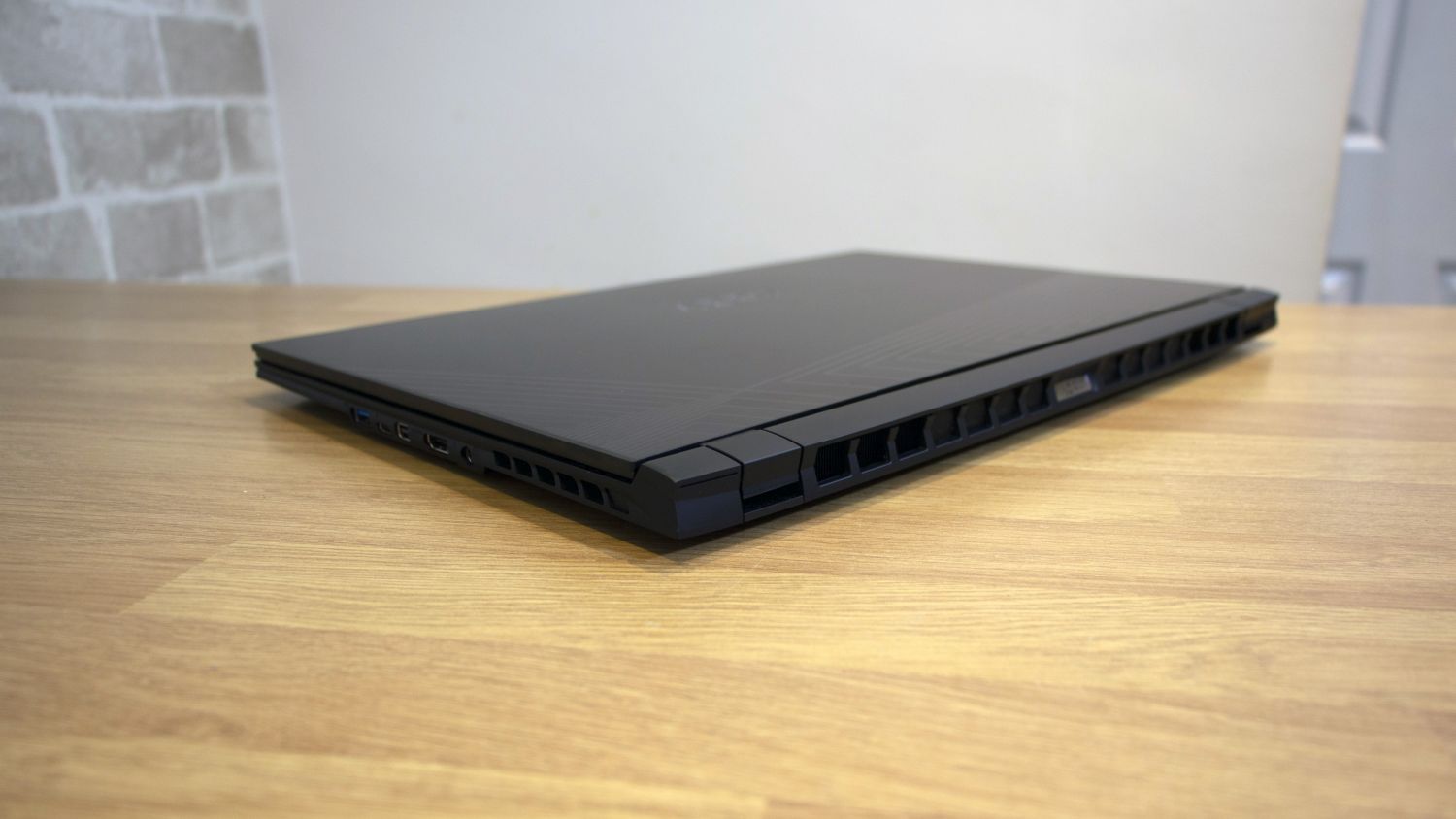
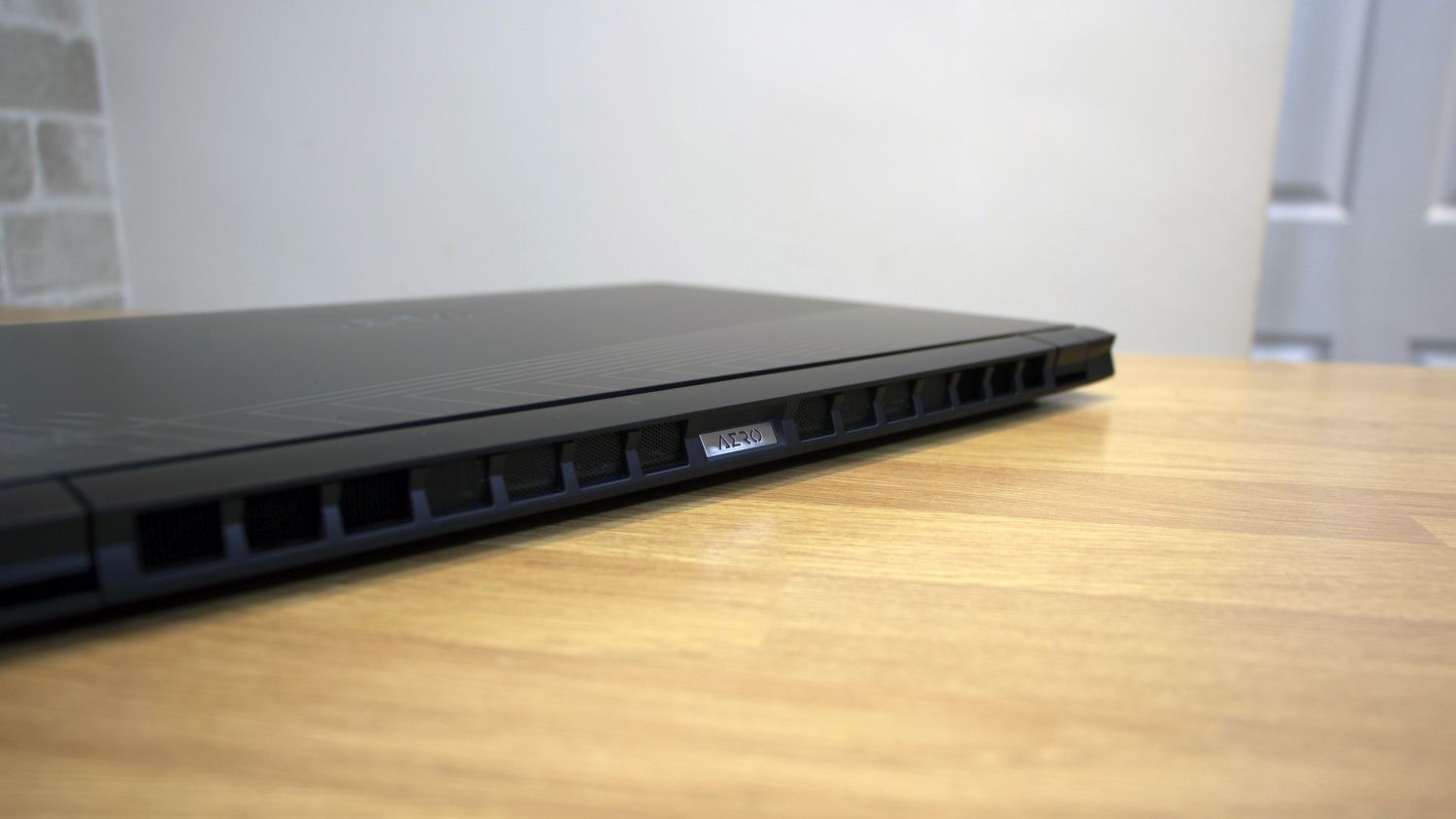
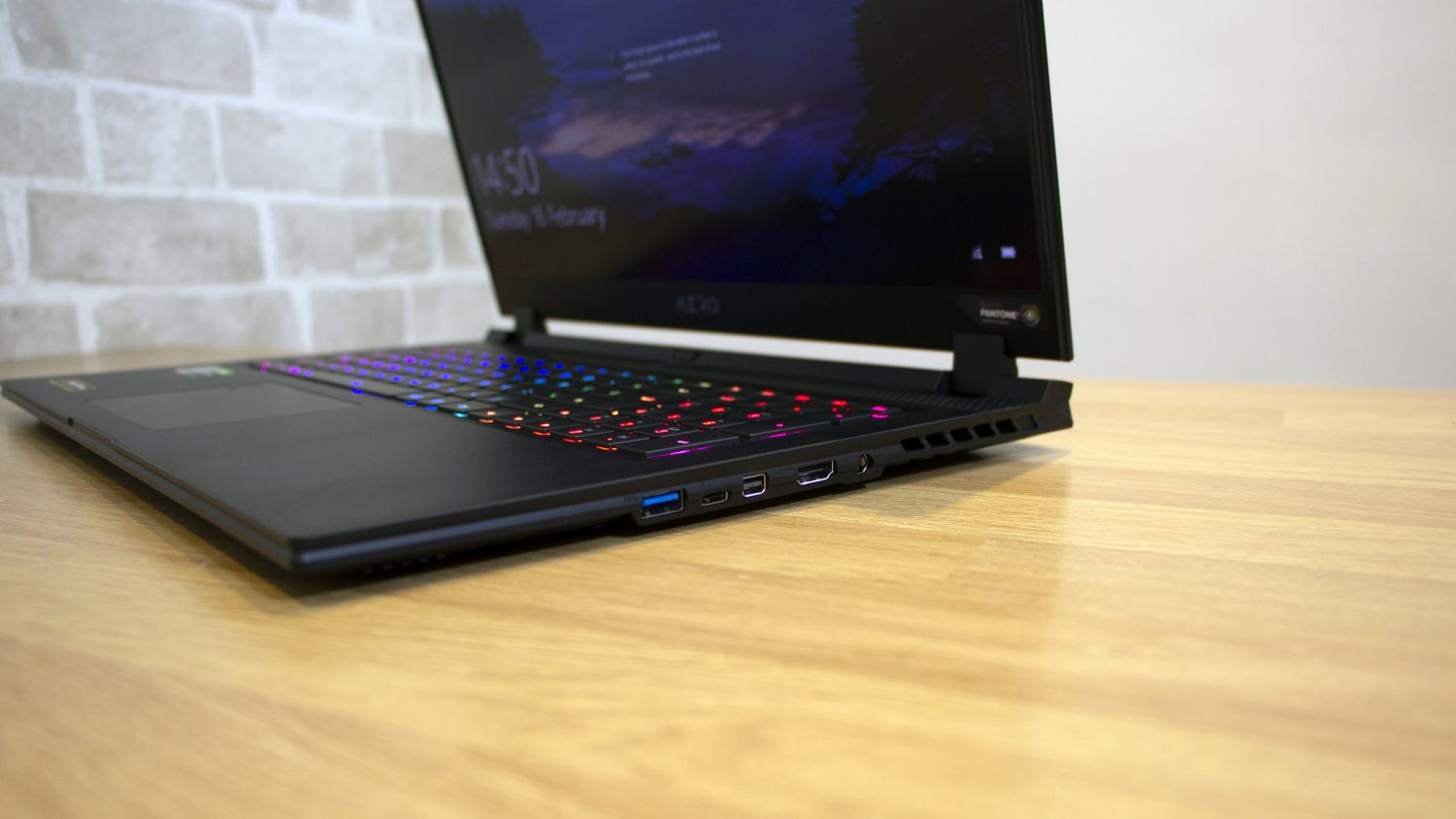
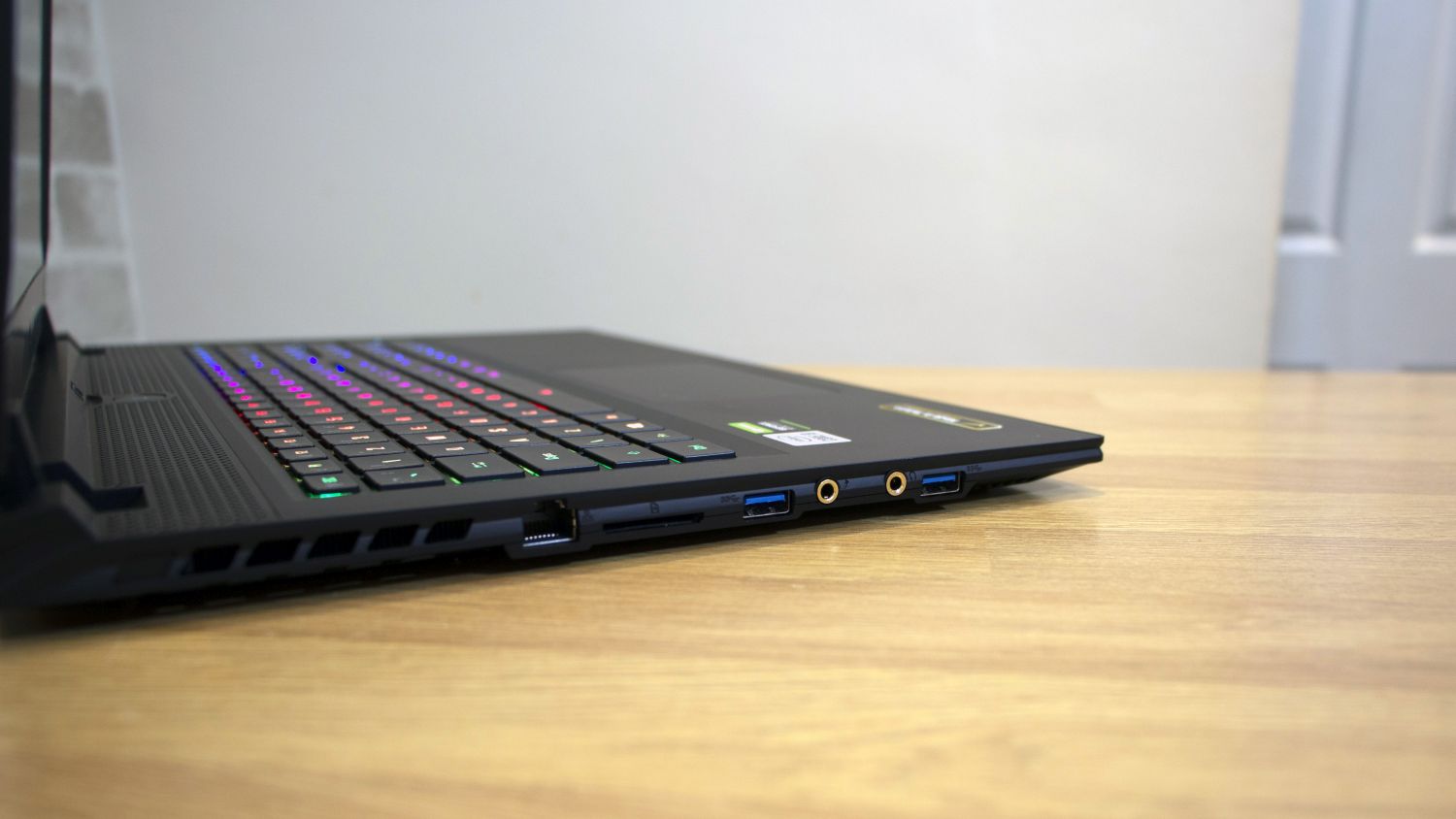
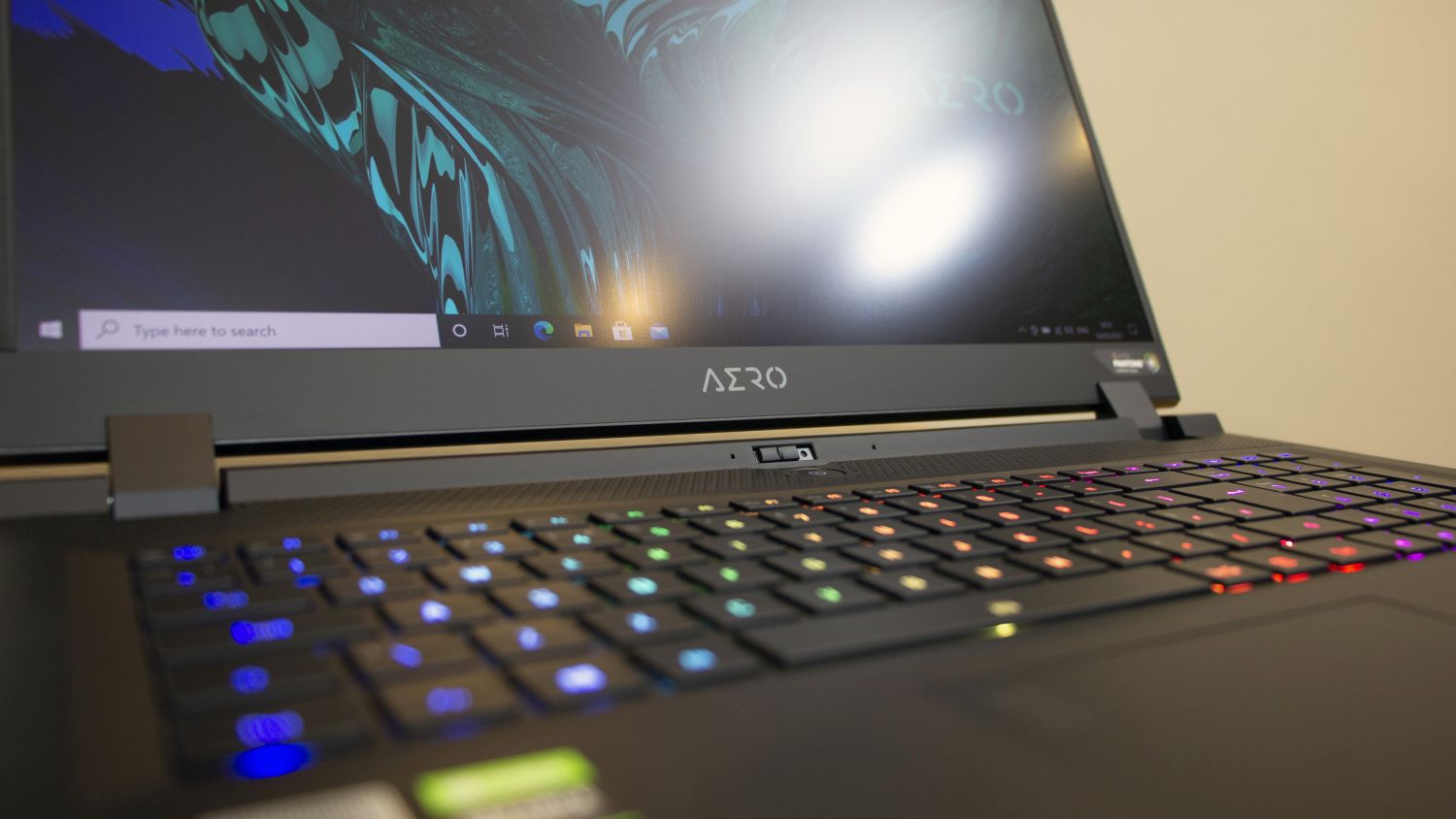
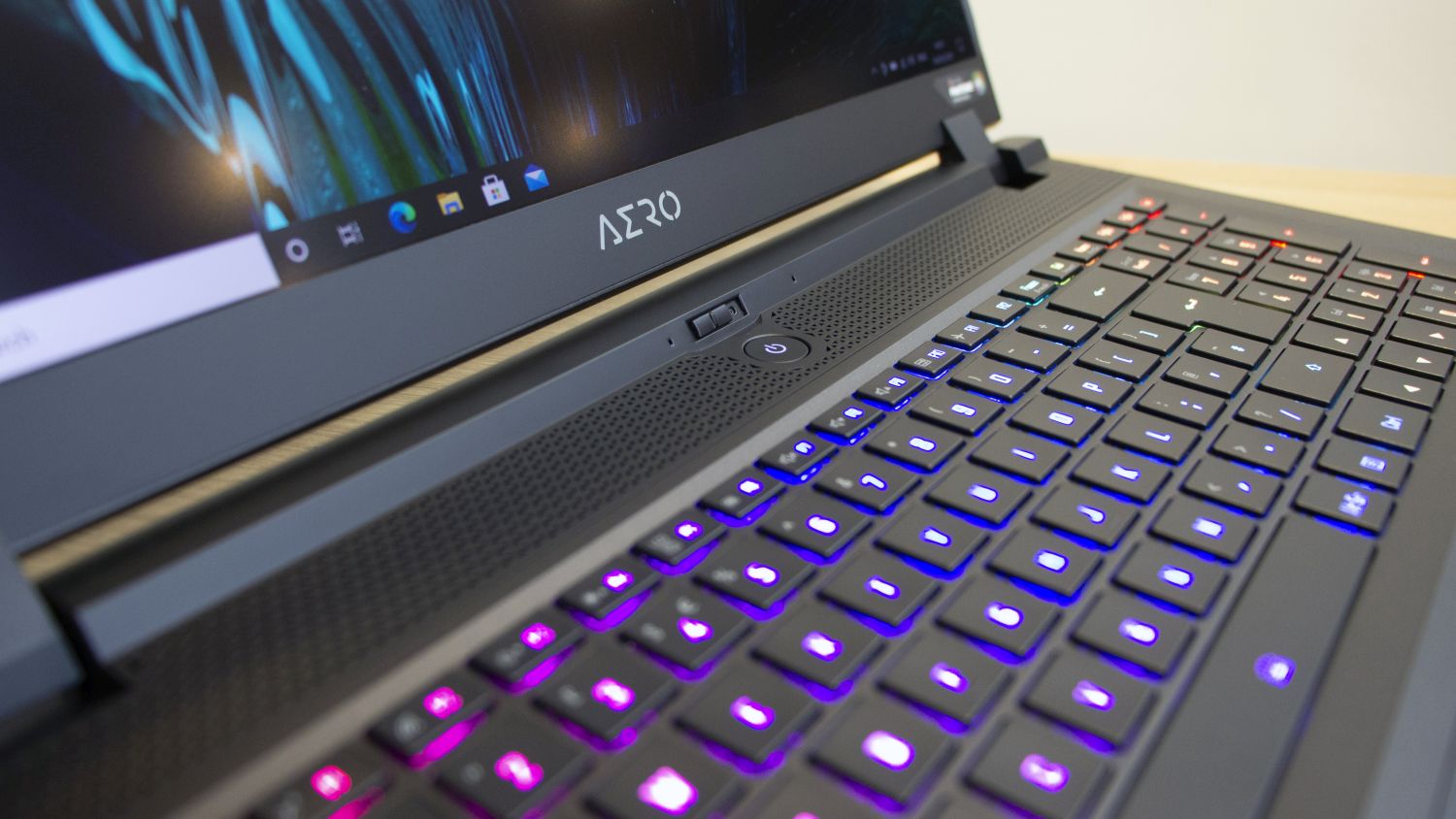
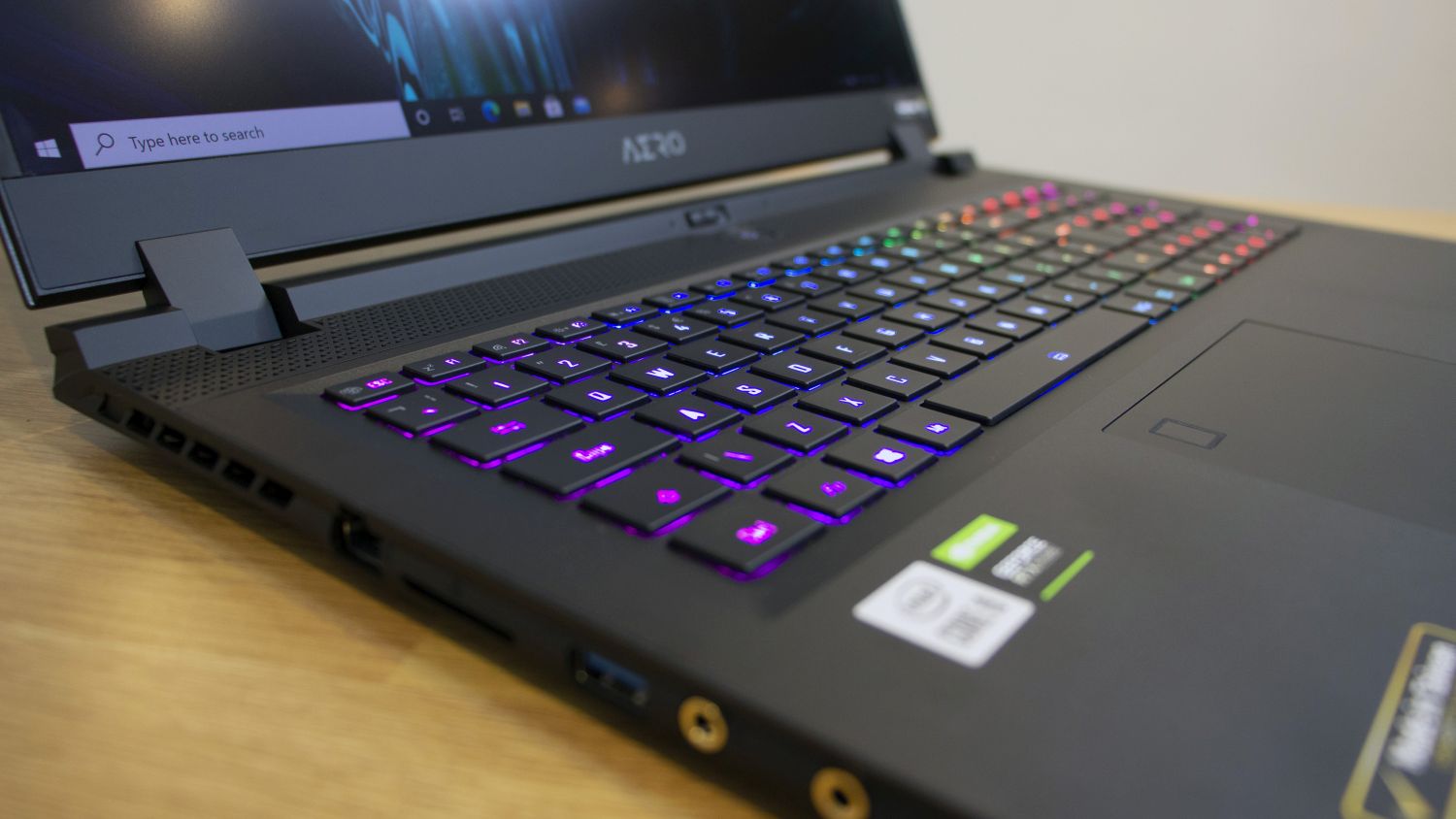
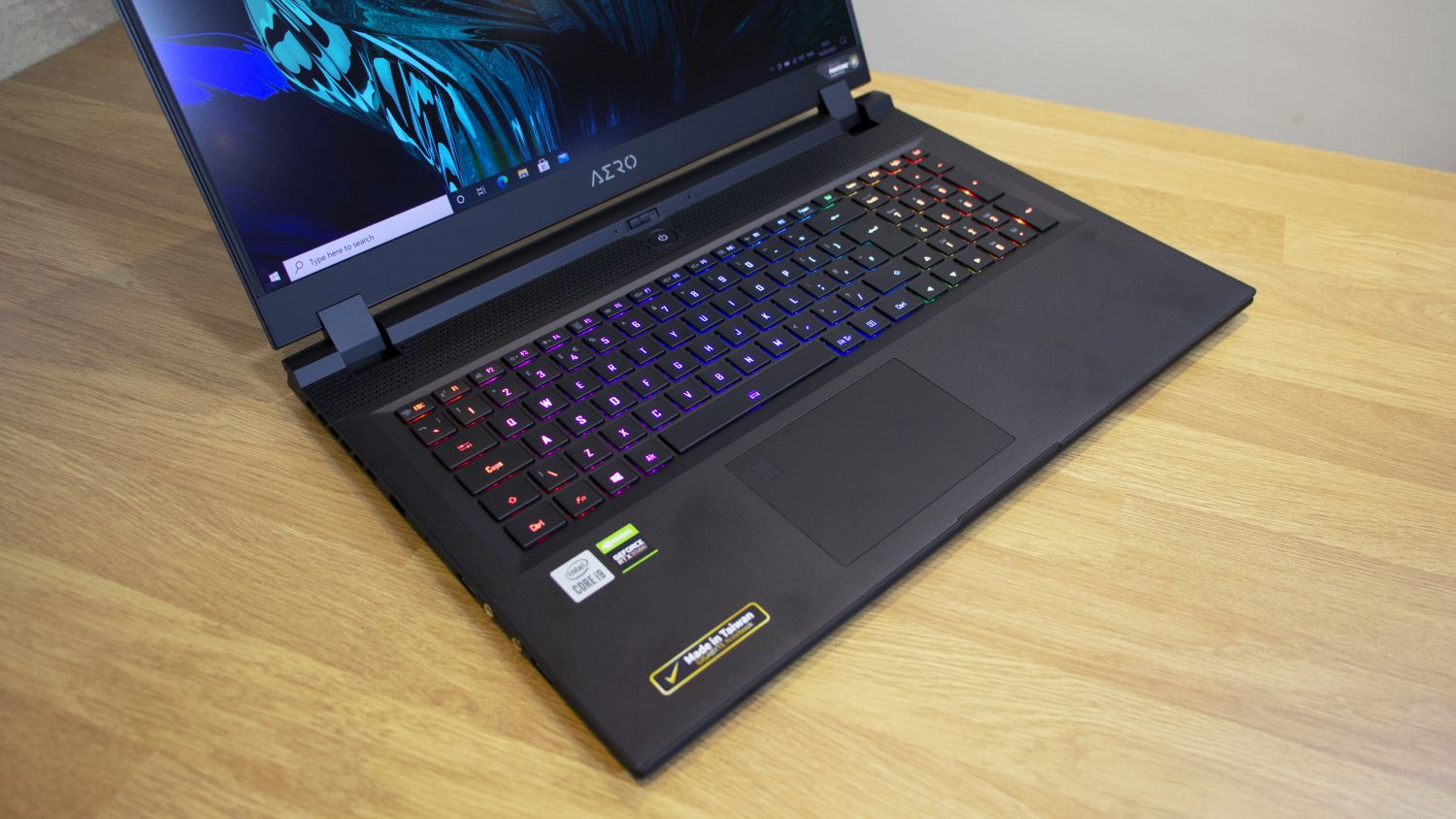
Nvidia’s desktop RTX 3000-series cards made a big impact in the autumn, but it’s taken this long for the Ampere architecture to begin appearing in laptops. The first Ampere-powered machine we’ve seen comes from Gigabyte and the Aero 17 HDR YC is a beast, featuring top-tier components crammed inside a slick chassis with a 17.3in screen.
That’s understandably tempting for creatives, but this laptop costs a mighty £3,500 exc VAT. The eye-watering price makes the Aero one of the most expensive machines around, and brings it in line with top-tier competition like the Apple MacBook Pro 16 and the Dell XPS 17.
Gigabyte Aero 17 HDR YC review: Design
Gigabyte’s machine uses the same chassis design as last year’s model – which means black aluminium and triangular grilles. It’s subdued and mature, although it’s now looking a little dated when compared to the sleek aluminium of the MacBook and the Dell.
Last year’s Aero suffered with middling build quality, and not all of those problems have been addressed. The screen is sturdier this time around, but there’s still too much movement in the wrist-rest and the exposed seams and sharp edges remain annoying.
The Aero isn’t slim or light, either – its weight has increased to 2.76kg and its chassis remains 21.4mm thick. That’s not a problem for a backpack, or if this machine stays rooted to your desk, but rival machines are far more portable.

Gigabyte Aero 17 HDR YC review: Keyboard & trackpad
On the other hand, the Aero’s size means the keyboard benefits from a full-size numberpad, double-height Return key, loads of function options and customisable per-key RGB LEDs. The typing action is decent, too: the buttons are fast and consistent, and they move comfortably and bottom-out softly.
Having said that, the switches could be quieter, and the keys themselves could be a little larger. It won’t be a problem once users familiarise themselves with the buttons, but it’s a tad disappointing on a machine of this size. This is in contrast to similarly-sized rivals, which make up for their lack of numberpads with larger keys.
Elsewhere, the trackpad is fine, with a responsive surface and two shallow, responsive buttons, but if you’re looking for increased real-estate, the MacBook has a far larger pad.
Gigabyte Aero 17 HDR YC review: Display
As you’d expect from a laptop aimed at creative types, the Aero has a 17.3in 4K IPS display with X-Rite Pantone certification, and quality levels are superb. The Delta E of 1.45 and the colour temperature of 6,434K are fantastic, the gamma level of 2.15 is decent, and the display renders 99.8% and 99.7% of the sRGB and Adobe RGB gamuts.
The brightness level of 431cd/m2 is paired with a black point of 0.34cd/m2 to deliver a contrast ratio of 1,268:1. Those figures aren’t quite as good as last year’s Aero, but still easily good enough – the screen delivers impressive depth, punch and nuance, and it’s usable indoors or outside.

This screen is a great option for sRGB and Adobe work but, despite the laptop’s name, it’s not good enough for HDR. The Aero only adheres to the entry-level DisplayHDR 400 standard, its brightness level and black point don’t meet the threshold for true HDR, and it only rendered 87% of the DCI-P3 gamut.
For designers seeking a higher-quality HDR experience, both the MacBook Pro and XPS 17 offer improved DCI-P3 coverage, so you’ll get access to a wider band of colours; and the XPS 17’s 3,840 x 2,400 resolution means you’ll also get more on-screen real estate.
Gigabyte Aero 17 HDR YC review: Hardware & performance
Nvidia’s latest range of mobile graphics cards use the Ampere architecture to beef up efficiency, improve memory performance and embrace more decoding standards. The RTX 3080 is Nvidia’s new mobile flagship, and it’s got a mighty 6,144 stream processors. Two versions of the RTX 3080 are produced for laptops – one with 16GB of memory and one with 8GB – and the latter is used here. The Aero is also an Nvidia Studio laptop, which means it ships with graphics drivers optimised for creative tools like the Adobe Creative Suite, Unreal Engine 4 and Autodesk, rather than gaming.
Gigabyte pairs the brand-new graphics core with formidable components elsewhere. The Intel Core i9-10980HK processor is a Comet Lake eight-core CPU with a theoretical 5.1GHz Turbo speed, and it sits alongside a mammoth 64GB of memory and two 1TB SSDs.
This hefty specification scored 250 in our benchmarks. That’s fantastic – capable of handling virtually any work task, from photo-editing to 4K video and tough 3D modelling. It won’t balk at tough multi-tasking either. The SSD helps: its read and write speeds of 3,378MB/sec and 3,029MB/sec are very quick, although not as fast as the latest PCIe 4 drives.

However, while the Aero is fast, it’s not flawless. That benchmark score is virtually identical to the older Core i9-9980HK used inside the top-end MacBook – the chips are the same aside from some minor speed tweaks. The newer Aero’s Core i9 part also isn’t far ahead of the Core i7-10875H used in last year’s model. That chip is still used inside plenty of machines, including the Dell, and it scored 229 in our tests.
Also consider AMD for CPU power. AMD’s processors aren’t available in the creative laptops mentioned here, but the Ryzen 7 5800H and Ryzen 9 5900HX are used in RTX 3080 gaming laptops that look just as smart as the Aero – and usually at lower prices. Benchmarks demonstrate AMD’s CPU ability, too: in Geekbench’s single- and multi-core tests the Aero’s Intel CPU scored 1,222 and 7,035 points. The Ryzen 7 5800H was marginally faster across both tests, while the Ryzen 9 5900HX was quicker in the single-threaded test and more than 1,500 points faster in the multi-threaded benchmark.
At this end of the market, processors offer diminishing returns, but AMD chips could provide more performance while Core i7 CPUs could save cash without much of a performance hit.
Nvidia’s latest GPU, on the other hand, is a bona fide barnstormer. In the 3D Mark Fire Strike test the RTX 3080 scored 20,136 points. That’s around 2,500 points beyond the RTX 2070 Super used in last year’s Aero. This is the full-fat RTX 3080 laptop chip, albeit with some power restrictions, and you won’t be short on performance here. It’s twice as good as the weaker AMD graphics chip used in the MacBook, and it’ll leave any laptop with integrated graphics in the dust.
It’s impressive in enterprise workloads, too. In Cinebench’s OpenGL test its 135fps result was better than the 131fps scored by last year’s RTX 2070 Super laptop chip, and the Aero’s RTX 3080 outpaced last year’s desktop flagships in Luxmark. In SPECviewperf, it beat those desktop cards in 3DSMax, it was barely slower in rendering, medical and geographic imaging tests, and it wasn’t far behind in CAD-focused benchmarks. No matter the task the RTX 3080 will cope, and rendering, animation and modelling are key strengths.

It’s somewhat surprising, then, to see that the Aero is such a good thermal performer. In CPU and GPU testing its internal temperatures were fine and noise levels were decent – most high-end laptops are louder. The keyboard deck and wrist-rest are never warm, and although the underside does heat up, its size and weight mean that the Aero is more than likely going to remain on your desk.
Gigabyte has done a solid job of keeping things balanced, albeit by cutting back on speeds: the CPU never quite attains its theoretical top speeds, and Nvidia gives manufacturers leeway to cut Ampere graphics cores back a little - so here the RTX 3080 peaks at a 105W TDP rather than 150W. You lose a little performance, but it does prevent thermal issues.
The Aero lasted for 6hrs 37mins in our battery test. That may not sound like much, but it’s a decent lifespan for something this powerful. For context, it’s within an hour of the MacBook Pro’s result, and although you won’t want to take it on the road, it’s easily enough to get you through to lunchtime.
Gigabyte Aero 17 HDR YC review: Features
The Aero has three USB 3.2 ports and one Thunderbolt 3 connection, alongside HDMI and mini-DisplayPort outputs and an SD card reader. On the inside, there’s dual-band Wi-Fi 6 and Bluetooth 5.0, as well as super-fast 2.5Gb/sec Ethernet. For security, there’s a fingerprint reader and TPM chip, and internally you can access the memory and M.2 slots along with the wireless card.
In other departments, the features falter. The webcam has a privacy cover, but it’s awkwardly positioned beneath the screen and it doesn’t have IR support for facial recognition. The speakers aren’t great either, offering tinny audio without much bass.

The Aero’s feature set isn’t perfect, but it is impressive. Many other creative machines - including those from Apple and Dell - have more USB-C connectivity but they often omit full-size USB ports, wired internet and card readers.
Gigabyte Aero 17 HDR YC review: Verdict
The Aero 17 is one of the most expensive creative laptops you can buy, but it’s powerful enough to tackle virtually any work task and Gigabyte bolsters the components with good thermal performance, a fantastic screen and great connectivity. That’s great, but the weight, design and battery life are middling, and the keyboard could be larger and quieter.
It compares well to rivals: a MacBook Pro 16 with its beefiest components is slower and more expensive, albeit with better battery life, and the XPS 17 can’t come close to matching the graphical power on show here. You’ll only get more performance if you swap over to a desktop workstation. If you’d rather save a bit of cash, you can step down to a less well-equipped model for £1,500 exc VAT - but you’ll be losing some of that impressive speed.
It may not be perfect, but the Aero is enormously fast. If you need a creative machine for tough tasks, then nothing tops the speed of Gigabyte’s impressive heavyweight.
Gigabyte Aero 17 HDR YC specifications
| Processor | 2.4GHz Intel Core i9-10980HK |
| RAM | 64GB 3,200MHz DDR4 |
| Graphics | Nvidia GeForce RTX 3080 laptop 8GB |
| Storage | 2 x 1TB Toshiba Kioxia XG6 NVMe SSD |
| Display | 17.3in 3,840 x 2,160 IPS |
| Operating System | Windows 10 Pro 64-bit |
| Connectivity | Dual-band 802.11ax WiFi, Bluetooth 5.0, 2.5Gbps Ethernet |
| Ports | 1 x USB 3.2 Gen 2 Type-C/Thunderbolt 3, 3 x USB 3.2 Gen 1 Type-A, 1 x HDMI, 1 x mini-DisplayPort, 1 x SD, 2 x audio |
| Dimensions | 396 x 270 x 21.4mm (WxDxH) |
| Weight | 2.76kg |
| Warranty | 1yr RTB |
Get the ITPro daily newsletter
Sign up today and you will receive a free copy of our Future Focus 2025 report - the leading guidance on AI, cybersecurity and other IT challenges as per 700+ senior executives
Mike Jennings has worked as a technology journalist for more than a decade and has been fascinated by computers since childhood, when he spent far too long building terrible websites. He loves desktop PCs, components, laptops and anything to do with the latest hardware.
Mike worked as a staff writer at PC Pro magazine in London for seven years, and during that time wrote for a variety of other tech titles, including Custom PC, Micro Mart and Computer Shopper. Since 2013, he’s been a freelance tech writer, and writes regularly for titles like Wired, TechRadar, Stuff, TechSpot, IT Pro, TrustedReviews and TechAdvisor. He still loves tech and covers everything from the latest business hardware and software to high-end gaming gear, and you’ll find him on plenty of sites writing reviews, features and guides on a vast range of topics.
You can email Mike at mike@mike-jennings.net, or find him on Twitter at @mikejjennings
-
 ‘Phishing kits are a force multiplier': Cheap cyber crime kits can be bought on the dark web for less than $25 – and experts warn it’s lowering the barrier of entry for amateur hackers
‘Phishing kits are a force multiplier': Cheap cyber crime kits can be bought on the dark web for less than $25 – and experts warn it’s lowering the barrier of entry for amateur hackersNews Research from NordVPN shows phishing kits are now widely available on the dark web and via messaging apps like Telegram, and are often selling for less than $25.
By Emma Woollacott Published
-
 Redis unveils new tools for developers working on AI applications
Redis unveils new tools for developers working on AI applicationsNews Redis has announced new tools aimed at making it easier for AI developers to build applications and optimize large language model (LLM) outputs.
By Ross Kelly Published
-
 Google layoffs continue with "hundreds" cut from Chrome, Android, and Pixel teams
Google layoffs continue with "hundreds" cut from Chrome, Android, and Pixel teamsNews The tech giant's efficiency drive enters a third year with devices teams the latest target
By Bobby Hellard Published